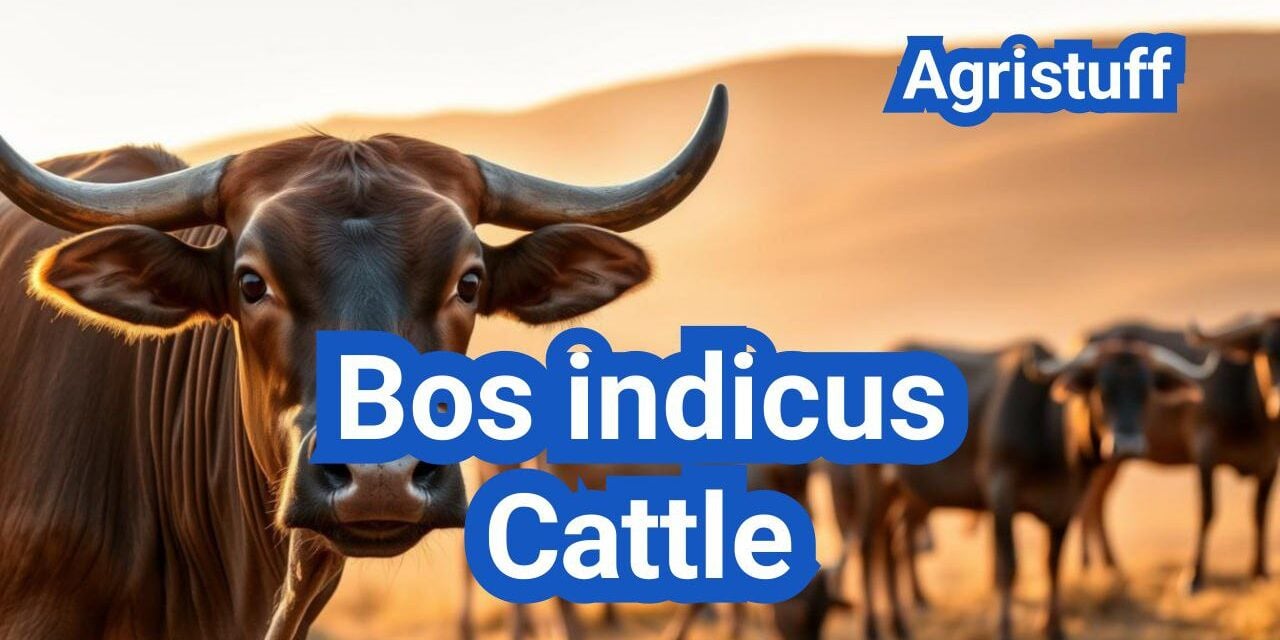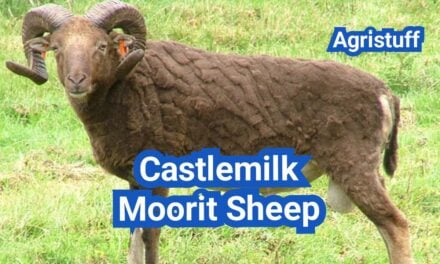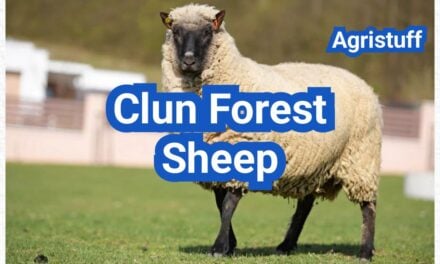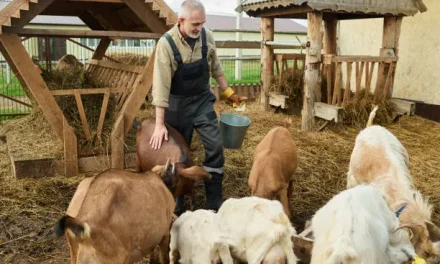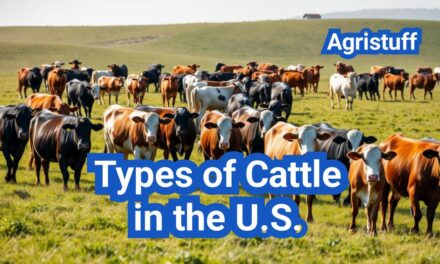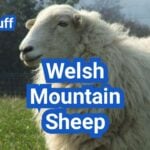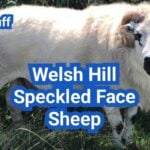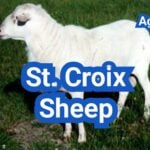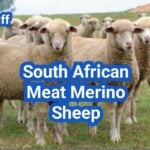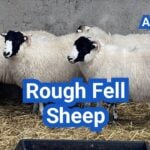Bos indicus cattle, also known as Zebu cattle, have been increasingly utilized in the U.S. cattle industry due to their exceptional heat tolerance and resistance to parasites.
Originating from tropical regions, these cattle breeds have adapted to thrive in hot and humid climates, making them ideal for tropical beef production.
The significance of Bos indicus cattle lies in their ability to withstand harsh environmental conditions, making them a valuable asset for farmers and ranchers in the southern United States.
The practice of crossbreeding Bos indicus with other cattle breeds has also gained popularity, as it combines the heat tolerance of Bos indicus with the desirable traits of other breeds.
Key Takeaways
- Bos indicus cattle are known for their heat tolerance and parasite resistance.
- They are ideal for tropical beef production in hot and humid climates.
- Crossbreeding Bos indicus with other breeds is a common practice.
- Their adaptability makes them valuable for farmers in the southern U.S.
- Bos indicus cattle are also known as Zebu cattle.
Origin and History of Bos indicus Cattle
Bos indicus cattle have a rich history that spans thousands of years, originating in South Asia. These cattle, also known as Zebu, have been an integral part of the region’s agriculture and culture.
Ancient Origins in South Asia
The earliest recorded history of Bos indicus dates back to the Indus Valley Civilization, around 4000 BCE. They were prized for their strength, heat tolerance, and milk production. Over time, various breeds developed across the Indian subcontinent, each adapted to local conditions.
Introduction to the Western World
Bos indicus cattle were introduced to the Western world in the late 19th century, primarily for their heat tolerance and hardiness. They were used to improve local breeds in tropical and subtropical regions.
Timeline of Bos indicus in the United States
The first Bos indicus cattle arrived in the United States in the early 20th century. The Brahman breed was among the first to be established, and it played a crucial role in developing other breeds.
Since their introduction, Bos indicus cattle have become integral to American cattle production, particularly in hot and humid climates.
Key Characteristics of Bos indicus Cattle

Bos indicus cattle are renowned for their distinct characteristics that enable them to thrive in challenging environments. These traits have made them a valuable asset in various cattle production systems, particularly in hot and humid climates.
Physical Traits and Adaptations
Bos indicus cattle exhibit several physical adaptations that contribute to their heat tolerance. Their large ears provide a significant surface area for heat dissipation, while their loose, droopy skin allows for better airflow and cooling. Additionally, their sweat glands are more efficient than those of Bos taurus cattle, further enhancing their ability to regulate body temperature.
Physiological Differences from Bos taurus
Physiologically, Bos indicus cattle differ from Bos taurus in several key ways. They have a lower metabolic rate, which reduces heat production, and their thermoregulation mechanisms are more effective. As a noted cattle expert once said, “The heat tolerance of Bos indicus cattle is a game-changer for producers in tropical regions.”
“Bos indicus cattle have evolved to thrive in environments where other breeds would struggle to survive.”
These physiological differences, combined with their physical traits, make Bos indicus cattle well-suited to hot climates. Understanding these characteristics is crucial for producers looking to optimize their cattle production systems.
Heat Tolerance: The Bos indicus Advantage
Heat tolerance is a hallmark of Bos indicus cattle, driven by their unique physiological adaptations. This characteristic makes them particularly valuable in hot and humid climates where other breeds may struggle.
Physiological Mechanisms of Heat Resistance
Bos indicus cattle possess several physiological traits that contribute to their heat resistance. These include:
- A loose, dewlap skin that allows for efficient heat dissipation
- A high concentration of sweat glands to cool the body
- A coat of short, fine hair that reflects sunlight and aids in heat loss
These adaptations work together to help Bos indicus cattle maintain a stable body temperature, even in extreme heat.
Understanding Temperature-Humidity Index (THI)
The Temperature-Humidity Index (THI) is a critical measure for assessing heat stress in cattle. It combines temperature and humidity to provide a comprehensive picture of the heat load on animals. Understanding THI is essential for managing Bos indicus cattle effectively, as it helps farmers anticipate and mitigate heat stress.
How to Measure and Evaluate Heat Stress in Cattle
Measuring heat stress involves observing cattle behavior, monitoring physiological indicators, and using the THI. Key signs of heat stress include:
- Increased respiration rate
- Reduced feed intake
- Changes in behavior, such as restlessness or lethargy
By recognizing these signs and understanding the THI, farmers can implement strategies to alleviate heat stress, such as providing shade, ensuring adequate ventilation, and adjusting feeding schedules.
In conclusion, the heat tolerance of Bos indicus cattle is a significant advantage in hot climates. By understanding the physiological mechanisms behind this trait, using tools like the THI, and recognizing signs of heat stress, farmers can optimize the performance and welfare of their Bos indicus cattle.
Parasite and Disease Resistance in Zebu Cattle

Parasite resistance is a hallmark of Bos indicus cattle, making them ideal for challenging environments. Their natural ability to withstand various parasites and diseases reduces the need for chemical treatments, promoting more sustainable cattle production.
Tick Resistance Mechanisms
Bos indicus cattle have developed unique physiological and immunological mechanisms to resist tick infestations. Their tick resistance is attributed to several factors, including:
- Grooming behavior: Bos indicus cattle exhibit vigorous grooming, which helps remove ticks from their coats.
- Skin structure: The thickness and structure of their skin make it difficult for ticks to attach and feed.
- Immune response: They produce antibodies against tick saliva, which helps in reducing tick infestations.
Internal Parasite Tolerance
In addition to tick resistance, Bos indicus cattle also show tolerance to internal parasites. This tolerance is crucial for maintaining their overall health and productivity in environments where internal parasites are prevalent.
Implementing Effective Parasite Control Programs
While Bos indicus cattle have inherent parasite resistance, implementing effective parasite control programs is still essential. Strategies include:
- Monitoring parasite loads: Regular monitoring helps in early detection and management of parasite infestations.
- Selective breeding: Breeding programs that select for enhanced parasite resistance can further improve the resilience of Bos indicus cattle.
- Integrated parasite management: Combining biological, chemical, and management practices to control parasites sustainably.
By leveraging the natural parasite resistance of Bos indicus cattle and implementing effective control programs, producers can enhance the sustainability and productivity of their cattle operations.
Major Bos indicus Breeds in the U.S.
Several Bos indicus breeds have gained prominence in the U.S. for their unique characteristics and adaptability. These breeds have been instrumental in enhancing the resilience and productivity of American cattle farming.
Brahman: The Foundation Breed
The Brahman breed is one of the most recognized Bos indicus breeds in the United States. Known for its heat tolerance and resistance to insects, Brahman cattle have been widely used in crossbreeding programs to improve the hardiness of other breeds.
Brahman cattle are characterized by their distinctive hump and large ears, which help in heat dissipation. Their ability to thrive in challenging environmental conditions makes them a valuable resource for cattle farmers in the southern U.S.
Other Pure Zebu Breeds: Gir, Nelore, and Guzerat
In addition to Brahman, other pure Zebu breeds such as Gir, Nelore, and Guzerat have also made significant contributions to U.S. cattle production. The Gir breed, originating from India, is known for its dairy potential and resistance to ticks.
Nelore cattle, widely used in Brazil, have been introduced to the U.S. for their growth rate and adaptability. Guzerat, another hardy breed, is valued for its heat tolerance and is often used in crossbreeding programs.
| Breed | Key Characteristics | Primary Use |
|---|---|---|
| Brahman | Heat tolerance, insect resistance | Beef production, crossbreeding |
| Gir | Dairy potential, tick resistance | Dairy production |
| Nelore | Growth rate, adaptability | Beef production |
| Guzerat | Heat tolerance, hardiness | Beef production, crossbreeding |
Selecting the Right Breed for Your Environment
When selecting a Bos indicus breed, it’s crucial to consider the specific environmental conditions and production goals of your farm. Factors such as climate, available feed resources, and desired production outcomes should guide your decision.
By understanding the characteristics and advantages of different Bos indicus breeds, cattle producers can make informed decisions that enhance the sustainability and profitability of their operations.
How to Develop Effective Crossbreeding Systems
To achieve optimal results in cattle production, understanding how to develop effective crossbreeding systems is essential. Crossbreeding Bos indicus with other breeds can significantly enhance productivity through heterosis, also known as hybrid vigor.
Understanding Heterosis in Bos indicus Crosses
Heterosis refers to the increased vigor and performance observed in offspring resulting from the cross between two different breeds or lines. In Bos indicus crosses, heterosis can manifest as improved growth rates, enhanced fertility, and better overall health.
- Increased growth rates
- Enhanced fertility
- Better disease resistance
F1 Crosses: Maximizing Hybrid Vigor
F1 crosses, which are the first-generation offspring of two purebred parents from different breeds, are known for maximizing hybrid vigor. These crosses often exhibit superior performance compared to their purebred parents.
Designing Multi-generational Breeding Programs
Designing effective multi-generational breeding programs involves careful planning to maintain the benefits of heterosis while achieving desired production traits. This can be accomplished by:
- Selecting appropriate breeds for the initial cross
- Implementing a rotational crossbreeding system to maintain heterosis
- Monitoring and selecting for desirable traits in subsequent generations
By understanding and leveraging heterosis in Bos indicus crosses, producers can develop effective crossbreeding systems that enhance productivity and profitability in their cattle operations.
American Bos indicus-Influenced Breeds

American cattle producers have leveraged Bos indicus genetics to create robust breeds that thrive in various production systems. These breeds combine the heat tolerance and disease resistance of Bos indicus with the superior meat quality of Bos taurus cattle.
Brangus: Angus x Brahman Development
The Brangus breed was developed by crossing Angus cattle and Brahman cattle. This combination brings together the hardiness of Brahman and the superior meat quality of Angus. Brangus cattle are known for their heat tolerance, resistance to insects, and high-quality beef.
Key characteristics of Brangus include:
- Heat tolerance and adaptability
- High-quality beef production
- Resistance to insects and diseases
Braford: Hereford x Brahman Advantages
Braford cattle are a cross between Hereford and Brahman breeds. They inherit the hardiness and heat tolerance of Brahman and the high-quality beef traits of Hereford. Brafords are known for their fast growth rate and high fertility.
The advantages of Braford include:
- Fast growth rate and efficient feed conversion
- High fertility and reproductive efficiency
- Hardiness and adaptability to challenging environments
Beefmaster and Santa Gertrudis Success Stories
Beefmaster and Santa Gertrudis are two successful Bos indicus-influenced breeds in the U.S. Beefmaster, developed from Brahman, Hereford, and Shorthorn, is known for its rapid growth and high fertility. Santa Gertrudis, a Brahman x Shorthorn cross, offers heat tolerance and superior beef quality.
| Breed | Parent Breeds | Key Characteristics |
|---|---|---|
| Brangus | Angus x Brahman | Heat tolerance, high-quality beef, insect resistance |
| Braford | Hereford x Brahman | Fast growth, high fertility, hardiness |
| Beefmaster | Brahman x Hereford/Shorthorn | Rapid growth, high fertility |
| Santa Gertrudis | Brahman x Shorthorn | Heat tolerance, superior beef quality |
These breeds have become integral to the U.S. cattle industry, offering producers a range of options for different production systems and environments. By leveraging the strengths of both Bos indicus and Bos taurus genetics, these breeds provide improved heat tolerance, disease resistance, and production efficiency.
Optimizing Beef Production with Bos indicus Cattle

Optimizing beef production in tropical and subtropical regions often involves leveraging the unique characteristics of Bos indicus cattle. Their heat tolerance, feed efficiency, and adaptability make them an ideal choice for producers in these areas.
Growth Performance in Hot Climates
Bos indicus cattle are known for their ability to maintain growth performance even in hot climates where other breeds might struggle. This is due to their physiological adaptations that allow them to regulate body temperature more effectively.
The growth rate of Bos indicus cattle can be influenced by factors such as nutrition, management practices, and genetics. Producers can optimize growth by ensuring that the cattle receive adequate nutrition and are managed under low-stress conditions.
Feed Efficiency and Conversion Rates
One of the significant advantages of Bos indicus cattle is their feed efficiency. They are capable of converting feed into body weight more efficiently than some other breeds, which can lead to cost savings for producers.
Improving feed conversion rates involves selecting cattle with genetic potential for efficient feed utilization and implementing nutritional management strategies that maximize feed intake and digestibility.
Managing Carcass Characteristics for Better Quality Grades
Managing carcass characteristics is crucial for achieving better quality grades in beef production. Bos indicus cattle can produce high-quality carcasses when managed appropriately.
Producers can enhance carcass quality by implementing breeding programs that focus on desirable traits such as marbling, muscling, and fat distribution. Additionally, proper feeding strategies and handling practices can contribute to improved carcass quality.
Addressing Meat Tenderness Challenges

Meat tenderness is a critical factor in beef quality, and Bos indicus cattle pose specific challenges in this area. The tenderness of beef is influenced by multiple factors, including genetics, animal handling, and processing techniques.
Understanding the Tenderness Challenge
Bos indicus cattle are known for their heat tolerance and resistance to certain parasites, making them valuable in hot climates. However, their meat can be less tender than that of Bos taurus breeds. This difference is largely due to genetic factors and the connective tissue composition in Bos indicus beef.
Genetic Selection for Improved Meat Quality
Genetic selection is a powerful tool for improving meat tenderness in Bos indicus cattle. By selecting for breeds or individuals with better marbling and meat quality traits, producers can enhance the overall tenderness of their beef. Utilizing genetic testing and selection programs can help identify and propagate desirable traits.
Processing and Aging Techniques for Enhanced Tenderness
In addition to genetic selection, processing and aging techniques play a crucial role in enhancing meat tenderness. Proper aging allows the natural enzymes in the meat to break down connective tissues, resulting in more tender beef. Techniques such as wet aging or dry aging can be employed, depending on the desired outcome and market preferences.
By combining genetic selection with advanced processing and aging techniques, producers can significantly improve the tenderness and overall quality of Bos indicus beef, making it more competitive in the market.
Tropical Dairy Production with Bos indicus Breeds

Bos indicus breeds have been increasingly utilized in tropical dairy production due to their heat tolerance. Certain Bos indicus breeds, such as Gir and Sahiwal, are renowned for their dairy production capabilities in challenging tropical environments.
Gir and Sahiwal as Dairy Producers
Gir and Sahiwal cattle are two prominent Bos indicus breeds used in dairy production. The Gir breed, originating from India, is known for its high milk yield and resistance to diseases. Sahiwal cattle, also from the Indian subcontinent, are recognized for their rich milk and adaptability to harsh climates.
Milk Production Comparison
| Breed | Average Milk Yield (kg/day) | Fat Content (%) |
|---|---|---|
| Gir | 8-12 | 4.5 |
| Sahiwal | 10-15 | 5.0 |
Milk Composition and Quality Characteristics
The milk from Gir and Sahiwal cattle is not only abundant but also rich in quality. According to a study, “The milk of Bos indicus breeds contains a higher percentage of fat and protein compared to some Bos taurus breeds, making it ideal for dairy product manufacturing.”
“The unique composition of milk from Bos indicus breeds makes it highly suitable for producing high-quality dairy products.”
– Dairy Expert
Crossbreeding Strategies for Heat-Tolerant Dairy Cattle
Crossbreeding Bos indicus with Bos taurus breeds can enhance dairy production while maintaining heat tolerance. Strategies include:
- Using F1 crosses to maximize hybrid vigor
- Selecting breeds with complementary traits
- Implementing rotational breeding programs
By leveraging the strengths of Bos indicus breeds, dairy farmers in tropical regions can improve milk production and quality, contributing to a more sustainable dairy industry.
Low-Stress Handling Techniques for Bos indicus Cattle

Handling Bos indicus cattle effectively is crucial for their welfare and productivity, necessitating low-stress techniques tailored to their distinct characteristics. Bos indicus cattle are known for their strong will and independent nature, which can make handling more challenging if not done correctly.
Understanding Temperament Differences
Bos indicus cattle tend to be more temperamental than some other breeds, requiring handlers to be patient and understanding. Their temperament is shaped by both genetics and environmental factors, making it essential to approach handling with a calm and consistent demeanor.
Designing Facilities for Bos indicus Behavior
The design of handling facilities can significantly impact the stress levels of Bos indicus cattle. Facilities should be designed to accommodate their natural behavior, including curved chutes that allow cattle to move through the facility following their natural tendency to circle back to their point of origin.
Implementing Calm Handling Protocols
Implementing calm handling protocols is vital for reducing stress in Bos indicus cattle. This includes moving slowly, avoiding sudden movements, and minimizing noise levels. Handlers should be trained to recognize and respond to the cattle’s behavioral cues, ensuring a smooth and stress-free handling process.
| Handling Technique | Description | Benefit |
|---|---|---|
| Slow Movement | Handlers move slowly around the cattle | Reduces stress and anxiety |
| Minimal Noise | Avoid loud noises during handling | Prevents startling the cattle |
| Curved Chutes | Facilities designed with curved chutes | Accommodates natural cattle behavior |
By understanding the temperament of Bos indicus cattle, designing facilities that accommodate their behavior, and implementing calm handling protocols, producers can significantly improve the welfare and productivity of their cattle. Low-stress handling is not just a technique; it’s an approach that benefits both the animals and the handlers.
Nutritional Management for Optimal Performance

Effective nutritional management is crucial for optimizing the performance of Bos indicus cattle. Proper nutrition ensures that these cattle can withstand challenging environmental conditions and achieve their full production potential.
Formulating Diets for Different Production Stages
Bos indicus cattle have different nutritional requirements at various stages of their life cycle. For instance, growing calves need higher protein levels for development, while lactating cows require more energy to support milk production. Formulating diets that cater to these specific needs is essential for maximizing their performance and overall health.
Forage Utilization Strategies
Forage is a critical component of cattle diets, and Bos indicus breeds are known for their ability to thrive on low-quality forages. Effective forage utilization strategies involve selecting the right types of forage and managing grazing practices to maintain pasture health and productivity.
Supplementation Programs for Challenging Environments
In challenging environments, such as those with high temperatures or limited forage availability, supplementation programs can help ensure that Bos indicus cattle receive the necessary nutrients. Strategic supplementation can improve cattle health, productivity, and resilience in the face of environmental stressors.
By implementing these nutritional management strategies, producers can optimize the performance of their Bos indicus cattle, leading to improved productivity and profitability.
Best Practices for Gulf Coast and Southern U.S. Production

Cattle production in the Gulf Coast area necessitates a deep understanding of regional adaptation techniques. Producers in this region face unique challenges such as high temperatures, humidity, and parasite pressure, which require specialized management strategies.
Regional Adaptation Strategies
To succeed in the Gulf Coast and Southern U.S. regions, producers must adopt regionally adapted cattle breeds, such as Bos indicus or Bos indicus-influenced breeds, which are known for their heat tolerance and parasite resistance. Implementing effective heat stress mitigation techniques, such as providing shade, adequate water supply, and cooling systems, is also crucial.
Seasonal Management Considerations
Seasonal variations in temperature and humidity significantly impact cattle production in the Gulf Coast region. Producers should adjust their management practices accordingly, such as:
- Providing additional nutritional support during periods of high heat stress
- Implementing parasite control measures during peak parasite seasons
- Adjusting breeding and calving schedules to optimize production during more favorable climatic conditions
Creating Sustainable Production Systems
Developing sustainable production systems is essential for long-term success in the Gulf Coast and Southern U.S. regions. This involves:
| Strategy | Description | Benefits |
|---|---|---|
| Rotational Grazing | Rotating pastures to avoid overgrazing | Improved pasture health, reduced erosion |
| Integrated Parasite Management | Combining multiple parasite control methods | Reduced parasite resistance, improved animal health |
| Conservation Practices | Implementing practices to conserve natural resources | Improved water quality, biodiversity conservation |
By adopting these best practices, producers in the Gulf Coast and Southern U.S. regions can enhance the sustainability and profitability of their cattle operations.
Economic Analysis of Bos indicus Operations
An economic analysis of Bos indicus operations reveals both opportunities and challenges for cattle producers. The integration of Bos indicus cattle into U.S. operations has been driven by their heat tolerance and potential for improved productivity in challenging environments.
Cost-Benefit Comparison with Conventional Systems
When comparing Bos indicus operations to conventional systems, several factors come into play. The initial investment in Bos indicus cattle can be higher due to the cost of importing genetics or purchasing purebred animals. However, their heat tolerance and potential for improved fertility in hot climates can lead to increased productivity and reduced veterinary costs over time.
Marketing Bos indicus-Influenced Cattle
Marketing strategies for Bos indicus-influenced cattle often focus on their unique characteristics, such as heat tolerance and parasite resistance. Producers can capitalize on these traits by targeting specific markets that value these attributes, potentially commanding a premium price.
Developing Niche Market Opportunities
Developing niche markets for Bos indicus-influenced cattle can provide additional revenue streams for producers. By emphasizing the breed’s adaptability to challenging environments and its potential for sustainable production, producers can tap into growing consumer demand for environmentally friendly and resilient agricultural practices.
At The End of: Bos indicus Cattle in the U.S.
Bos indicus cattle offer significant advantages in hot climates due to their inherent heat tolerance, making them an ideal choice for beef production in regions with high temperatures. Through effective crossbreeding programs, producers can capitalize on the benefits of Bos indicus genetics while maintaining or improving beef quality.
The use of Bos indicus cattle in the U.S. has been shown to enhance beef production in challenging environmental conditions. By understanding the key characteristics of these cattle, including their physical traits and physiological adaptations, producers can develop targeted breeding and management strategies to optimize their performance.
By leveraging the strengths of Bos indicus cattle, such as their parasite resistance and adaptability to hot climates, producers can create more sustainable and resilient beef production systems. As the beef industry continues to evolve, the incorporation of Bos indicus genetics is likely to play a crucial role in meeting the demands of a changing climate.
FAQ
What is the origin of Bos indicus cattle?
Bos indicus cattle originated in South Asia, where they were first domesticated over 7,000 years ago. They were later introduced to other parts of the world, including the United States, where they have become an important part of the cattle industry.
What are the key characteristics of Bos indicus cattle?
Bos indicus cattle are known for their heat tolerance, parasite resistance, and distinctive physical characteristics, such as their hump and drooping ears. They are also known for their hardiness and adaptability to challenging environments.
How do Bos indicus cattle resist heat stress?
Bos indicus cattle have several physiological mechanisms that help them resist heat stress, including a lower metabolic rate, more efficient sweating, and a greater ability to dissipate heat. They are also able to regulate their body temperature more effectively than other breeds.
What is the Temperature-Humidity Index (THI), and how is it used to assess heat stress in cattle?
The Temperature-Humidity Index (THI) is a measure of the combined effects of temperature and humidity on cattle. It is used to assess the level of heat stress in cattle and to determine when cooling measures are necessary.
What are some common Bos indicus breeds found in the U.S.?
Some common Bos indicus breeds found in the U.S. include Brahman, Gir, Nelore, and Guzerat. These breeds are known for their heat tolerance and parasite resistance, and are often used in crossbreeding programs to improve the hardiness of other breeds.
What is heterosis, and how is it used in crossbreeding programs involving Bos indicus cattle?
Heterosis is the phenomenon of increased vigor and performance in offspring resulting from the crossbreeding of two different breeds or species. In Bos indicus crossbreeding programs, heterosis is used to improve the hardiness and productivity of cattle by combining the desirable traits of Bos indicus and Bos taurus breeds.
What are some American Bos indicus-influenced breeds, and what are their characteristics?
Some American Bos indicus-influenced breeds include Brangus, Braford, Beefmaster, and Santa Gertrudis. These breeds are known for their heat tolerance, parasite resistance, and improved productivity, and are often used in beef production systems.
How can Bos indicus cattle be used to optimize beef production in hot climates?
Bos indicus cattle can be used to optimize beef production in hot climates by taking advantage of their heat tolerance and hardiness. They can be used in purebred or crossbred programs to improve the productivity and hardiness of cattle in challenging environments.
What are some challenges associated with meat tenderness in Bos indicus cattle?
Bos indicus cattle are known to have a slightly lower meat tenderness than some other breeds, due to their genetic makeup and muscle characteristics. However, this can be addressed through genetic selection, processing, and aging techniques.
How can low-stress handling techniques be used to improve the welfare of Bos indicus cattle?
Low-stress handling techniques, such as calm and gentle handling, can be used to improve the welfare of Bos indicus cattle by reducing their stress and anxiety. This can be achieved through proper training and handling facilities design.
What are some best practices for nutritional management of Bos indicus cattle?
Best practices for nutritional management of Bos indicus cattle include formulating diets that meet their nutritional needs, using high-quality forages, and implementing supplementation programs tailored to their specific needs and production stage.
What are some regional adaptation strategies for cattle production in the Gulf Coast and Southern U.S.?
Regional adaptation strategies for cattle production in the Gulf Coast and Southern U.S. include using heat-tolerant breeds, such as Bos indicus, and implementing management practices that take into account the local climate and environmental conditions.
What are some economic benefits of using Bos indicus cattle in production systems?
The economic benefits of using Bos indicus cattle in production systems include improved hardiness and productivity, reduced veterinary and health costs, and increased profitability through improved beef quality and quantity.
Conclusion of: Bos indicus Cattle in the U.S.
What are Bos indicus cattle?
Bos indicus cattle—also called zebu or humped cattle—are a major lineage of domestic cattle best known for their heat tolerance, parasite resistance, and hardiness in tropical and subtropical environments; for U.S. producers, bos indicus cattle offer a practical pathway to resilient beef or dairy herds where summers are long and humid, insects are persistent, and forage quality fluctuates, making breed choice a strategic decision for animal performance and profitability in challenging climates. Encyclopaedia Britannica — Cattle overview
History and origin of bos indicus cattle
Archaeogenetic research indicates bos indicus cattle were domesticated in South Asia, likely around the Indus Valley region, before spreading across Asia, Africa, and later the Americas through trade and colonization; this separate domestication event from Bos taurus set the stage for unique traits that make bos indicus cattle indispensable to agriculture in hot climates today. Molecular Biology and Evolution — Zebu cattle origins
Classification: Bos indicus vs. Bos taurus
Globally, domestic cattle are broadly divided into humped bos indicus cattle and humpless Bos taurus, and while the two interbreed freely, indicine animals typically carry a prominent shoulder hump, longer ears, and looser skin—a package of adaptations that matters when choosing genetics for heat, humidity, and vector pressure. FAO — Types and breeds of cattle
Signature physical characteristics
Defining features of bos indicus cattle include the thoracic hump (especially in bulls), pendulous ears, a pronounced dewlap, and pigmented, loose skin; these traits help bos indicus cattle dissipate heat, deter biting insects, and navigate brushy or muddy ranges where tougher hides and skin surface area are advantages. Merck Veterinary Manual — Cattle behavior & types
Heat tolerance and thermoregulation
Compared with many European breeds, bos indicus cattle typically sweat more efficiently, carry lighter hair coats, and maintain lower respiration rates under heat stress; for ranches across the U.S. Gulf Coast and Southeast, these thermotolerance traits allow bos indicus cattle to keep grazing, breeding, and gaining when temperatures and humidity peak. UF/IFAS EDIS — Incorporating Brahman genetics
Parasite and tick resilience
In tick-prone regions, bos indicus cattle generally exhibit greater tolerance to external parasites and some vector-borne diseases compared with many taurine breeds, reducing reliance on frequent chemical interventions; still, integrated control combining pasture rotation, strategic treatments, and monitoring remains essential for bos indicus cattle in risk areas. USDA ARS — Cattle Fever Tick Research Unit
Temperament and stockmanship
Bos indicus cattle often display higher reactivity than some Bos taurus breeds, so low-stress handling—calm movement, solid-sided alleys, and predictable routines—pays dividends in weight gain, reproduction, and carcass quality; careful selection for docility can steadily improve temperament in bos indicus cattle over time. Merck Veterinary Manual — Low-stress handling principles
Beef production, marbling, and tenderness
On tough forage and under heat, bos indicus cattle are efficient and hardy, yet pure indicus beef can be leaner and less tender due partly to higher calpastatin activity; producers often use crossbreeding, adequate finishing, low-stress handling, and post-harvest aging to optimize eating quality from bos indicus cattle. Peer-reviewed review — Heat tolerance & tenderness
Dairy potential of bos indicus cattle
Although U.S. ranchers focus mainly on beef, several bos indicus cattle breeds (e.g., Sahiwal, Gir, Guzerá) demonstrate meaningful dairy performance with useful butterfat levels and strong heat tolerance; under appropriate nutrition and mastitis control, bos indicus cattle can sustain viable dairying in hot climates. NDDB — Sahiwal dairy profile
Reproduction and fertility under heat
In hot, humid systems, bos indicus cattle often maintain pregnancy rates better than some taurine lines, though puberty can be later and estrus quieter; reproductive management for bos indicus cattle should emphasize nutrition, calm handling, and strategic synchronization to capture seasonal windows. Animal Frontiers — Cattle adapted to the tropics
Where bos indicus genetics fit in the United States
From Texas across the Gulf Coast and into Florida, many commercial cows carry indicus influence because bos indicus cattle perform reliably when heat, humidity, and parasites are persistent; even in temperate zones, modest indicus fractions can improve stayability and foraging where summers are increasingly hot. UF/IFAS EDIS — Using Brahman influence in the U.S.
Composite breeds that leverage bos indicus cattle
Popular U.S. composites such as Brangus (Brahman × Angus), Braford (Brahman × Hereford), Santa Gertrudis (Brahman × Shorthorn), and Beefmaster (Brahman × Hereford × Shorthorn) blend the adaptation of bos indicus cattle with carcass and maternal traits from taurine lines to balance performance and market targets. Oklahoma State — Breeds of cattle index
Crossbreeding strategy: how much indicus is ideal?
For many hot-humid ranches, F1 or moderate indicus levels (about 3/8 to 1/2) can optimize heterosis, cow longevity, and calf survivability, while maintaining carcass premiums; herds in extreme heat or heavy tick areas may justify higher indicus fractions, but bos indicus cattle should be matched to the end market. Texas A&M AgriLife — Breeds & biological types
Carcass quality management with bos indicus influence
If your herd contains substantial bos indicus cattle influence, emphasize sire selection with carcass EPDs, minimize pre-slaughter stress, ensure adequate days on feed, and apply disciplined post-harvest aging to close tenderness gaps; these steps help bos indicus cattle meet branded-beef expectations. American Meat Science — Tenderness & growth factors
Nutrition and grazing for tough environments
Bos indicus cattle tend to hold condition on lower-quality forages and during heat waves, but supplementation during weaning and breeding remains critical; monitoring Temperature-Humidity Index (THI), providing shade and abundant water, and adjusting stocking rates help bos indicus cattle stay productive. UF/IFAS EDIS — Heat stress in beef cattle
Health: integrated tick and heat-stress control
Even with innate advantages, bos indicus cattle benefit from integrated parasite management—pasture rotation, targeted acaricides, and vaccine research—plus heat-stress mitigation via shade structures, airflow, and clean water; a systems approach keeps bos indicus cattle fertile and gaining in hard summers. USDA APHIS — Cattle fever ticks
Dairy lines within bos indicus cattle
Gir, Sahiwal, and Guzerá are the best-known dairy-leaning bos indicus cattle, and they underpin composites like Girolando; when forage quality, heat, and vector pressure define your region, these bos indicus cattle can sustain milk flow and butterfat where many taurine breeds struggle. NDDB — Gir breed profile
Selecting seedstock and setting expectations
Start with climate and forage, then align genetics and marketing: where summers are hot and humid, bos indicus cattle or composites can drive fertility and longevity; in grid-driven markets, keep indicus fractions moderate and prioritize docility and carcass traits when selecting bos indicus cattle sires and dams. University of Nebraska — Breeds & crossbreeding
Facilities, handling, and record-keeping
Working bos indicus cattle safely requires good facilities (solid-sided alleys, non-slip floors, curved flow), routine stockmanship training, and meticulous records on fertility, weaning weights, health, and carcass data; over time these practices let bos indicus cattle express their genetic advantages consistently. Grandin — Cattle handling guidelines
Global diversity and conservation
From South Asia to Brazil and East Africa, many locally adapted bos indicus cattle breeds remain vital to food security; tracking populations and traits via international databases helps conserve diversity and gives producers climate-ready options as environments change for bos indicus cattle worldwide. FAO DAD-IS — Global breed database
Economics and market considerations
When factoring heterosis, cow longevity, and lower inputs for heat and parasites, bos indicus cattle can improve whole-herd economics in hot regions, but producers should also model carcass premiums, grid targets, and buyer preferences to set the right indicus fraction for bos indicus cattle in their market. Beef Checkoff — Sustainability & economics resources
Environmental sustainability
Hardy grazing behavior and heat tolerance let bos indicus cattle utilize warm-season grasses and marginal forage efficiently, potentially reducing supplemental feed and emissions per unit of output in hot climates; good grazing plans and water management keep bos indicus cattle productive and land healthy. USDA — Climate-smart agriculture overview
Regulatory and animal-welfare considerations
Producers using bos indicus cattle must follow transport, identification, and welfare rules while implementing humane handling and heat-stress mitigation; aligning with quality-assurance programs helps demonstrate best practices and continuous improvement for bos indicus cattle husbandry. Beef Quality Assurance — Program standards
Final thought
If your ranch faces heat, humidity, insects, or brush, bos indicus cattle—purebred or as composites—offer a competitive advantage; match indicus fraction to climate and market, prioritize docility and carcass traits, and apply low-stress handling and aging to deliver tender beef from bos indicus cattle consistently. Encyclopaedia Britannica — Beef cattle breeds
Sources & References
- Chen & colleagues (2010), MBE — South Asian origins of zebu
- FAO — Types and breeds of cattle
- UF/IFAS EDIS — Incorporating Brahman genetics
- Peer-reviewed review — Thermotolerance & tenderness
- Animal Frontiers — Adaptation in tropical cattle
- USDA ARS — Cattle Fever Tick Research
- Merck Veterinary Manual — Cattle behavior
- Oklahoma State — Breeds of cattle index
- FAO DAD-IS — Global breeds database

